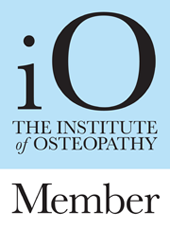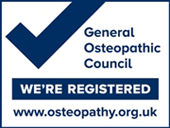Sports Massage
Sports massage is a natural therapy that benefits all systems of the body.
Muscular System
Sports massage improves muscle flexibility and tone, reducing the occurrence of cramps. It encourages the removal of waste products from the muscles (causing soreness after exercise) and it delivers oxygen and nutrients carried in the blood. Sports massage can also improve the functioning of muscles by reducing fibrous knots, adhesions and scar tissue.
Skeletal System
The application of sports massage is known to help with bad posture by relaxing and lengthening muscles that may be holding the body in certain unnatural positions. It will improve mobility by warming the lubricating fluid in stiff joints and with some techniques by physically mobilising affected areas such as the shoulders, wrists and ankles. By aiding circulation, sports massage also improves the blood supply to bones.
Cardiovascular System
Simple techniques encourage blood to travel to the extremities and also aid venous return. Most sports massage strokes move towards the heart to help deoxygenated blood in the veins to return to the heart and lungs to be oxygenated and pumped out into the body again. Sports massage is also good for reducing high blood pressure as tight muscles resist the flow of blood back to the heart.
Respiratory System
Sports massage promotes relaxation and deep breathing by encouraging better posture, opening the chest space and stimulating the intercostal muscles. Deep breathing improves the level of gaseous exchange taking place in the lungs, thereby delivering benefit to the body at a cellular level.
Lymphatic System
Even the lightest of sports massage techniques encourage the movement of lymph (fluid containing some of the bodies waste products) through the vessels thereby reducing oedema (swelling) and promoting the removal of toxins from the blood. It also increases the body’s immunity by stimulating the production of lymphocytes – white blood cells that protect the body from infection.
Nervous System
The parasympathetic nervous system is stimulated by sports massage, thereby counteracting the negative symptoms of stress such as reducing blood pressure. By relaxing tight muscles, it also improves the transmission of sensory messages to the brain and helps to reduce pain.
Endocrine and Reproductive Systems
Sports massage helps to restore the body to a state of homeostasis – equilibrium. It helps maintain hormone balance, counters the negative effects of adrenalin and encourages the production of pain-relieving endorphins and the calming hormone oxytocin.
Digestive and Urinary Systems
In times of stress the body’s sympathetic nervous system is stimulated, in effect putting the body on high alert. One of the side effects of this is that the digestive system – not required in ‘fight or flight’ mode – is switched off. Sports massage counteracts this and also speeds up the elimination of toxins from the body. The mechanical action of sports massage on the abdomen can assist with digestive transit.
The Skin
There are numerous benefits of sports massage to the skin including improved blood supply, exfoliation, encouraging elasticity of scar tissue and bringing nutrients to the skin through the use of oil.
Stages of Sports Massage
Maintenance Massage
An effective maintenance programme is based on a sports massage therapist’s understanding of anatomy, combined with an expert knowledge of which muscles are used in a given sport and which are likely candidates for trouble. By zoning in on particular muscle groups and working specific tissues, we can help athletes maintain or improve range of motion and muscle flexibility. The overall objective of a maintenance program is to help athletes reach optimal performance through injury-free training.
Event Massage
Pre-event sports massage is given within the four hours preceding an event to improve performance and help decrease injuries. It is used as a supplement to an athlete’s warm-up to enhance circulation and reduce excess muscle and mental tension prior to competition. It is normally shorter (10-15 minutes) than a regular conditioning massage, and focuses on warming-up the major muscles to be used, and getting the athlete in a good mental state for competition. It also improves tissue pliability, readying the athlete for top performance. Certain massage techniques can help calm a nervous athlete, and others can be stimulating.
Inter/Intra-event massage is given between events or in time-outs to help athletes recover from the preceding activity and prepare for the activity coming up. It is also short, and focuses on the major muscles stressed in the activity.
Post-event sports massage is given after a competition and is mainly concerned with recovery. It is geared toward reducing the muscle spasms and metabolic build-up that occur with vigorous exercise. Recovery after competition involves not only tissue repair, but also general relaxation and mental calming. A recovery session might be 15 minutes to 1.5 hours in length.
Rehabilitation Massage
Even with preventive maintenance, muscles cramp, tear, bruise and ache. Sports massage can speed healing and reduce discomfort during the rehabilitation process.
Our soft tissue techniques are effective in the management of both acute and chronic injuries.
Our Techniques
The three main categories of massage that are predominantly used in sport are effleurage, petrissage and frictions. Almost all massage techniques are carried out with the main pressure being directed towards the heart. This helps increase venous and lymphatic flow and ensures that no pressure of blood is being pushed against closed valves causes any damage to blood vessels. The only exception to this is where short strokes are aimed at stretching muscle fibres. The strokes are limited and so there is no risk of pressure being built up.
Effleurage – a variety of stroking movements, usually carried out with the whole palm of the hand and fingers, which may be used with varying pressure according to the purpose and stage reached during the massage. Effleurage is always used at the start of massage.
Petrissage – used on deeper tissues for mobilising fluids, stretching muscle fibres and inducing relaxation. Some of these techniques are specifically aimed at only deeper tissue and are therefore both ineffective and difficult to perform on narrow parts of the limbs.
Frictions – may be used for exploratory purposes, or for deeper and sometimes more painful movements aimed at breaking down lesions, separating muscle fibres, and even breaking down recent scar tissue. They only need to be carried out for a very short while.
Appointments
Sports massage appointments are available for 30 minutes (£32) or 1 hour (£50).
Examination and assessment of joints, tissues and ligaments will be performed. Patients may be asked to remove some clothing to allow assessment of posture and movements and are therefore requested to come appropriately dressed. Chaperones (a friend or relative) are welcome.


